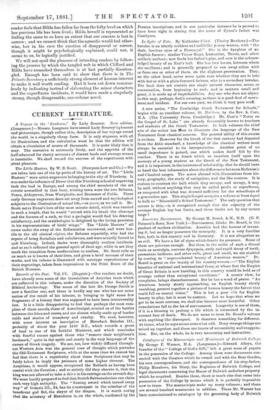The Little Masters. By W. B. Scott. (Sampson Low and
Co.) —We are taken into one of the by-paths of the history of art. The "Little Masters " were artist-engravers belonging to the city of Niirnberg. It was under the influence of Ditrer that this Nurnberg school of engraving took the lead in Europe, and among the chief members of the art -coterie assembled in that busy, stirring town were the two Behams, Penez, Aldegrever, from Westphalia, and Brosamer of Fulda. These -early German engravers drew art away from sacred and mythological subjects to the illustration of actual life,—or genre, as we call it. Mr. Scott notes Diirer's love of the most minute detail, which was carried to such a length, that he would "record with his brush the cleavage and the fissures of a rock, so that a geologist would find his drawing satisfactory, and the ornithologist is delighted by the loving precision in his representations of birds' wings." The "Little Masters" all -came under the sway of the Reformation movement, and were hos- tile to the old clerical rJgime, the Behams especially, who had the repute of being Socialists and unbelievers, and were actually forced to quit Ntirnberg. Indeed, theirs were thoroughly restless intellects and as such reflected the general spirit of their age, while in art they mark the transition from medimvalism to realism. Mr. Scott tells us as much as is known of their lives, and gives a brief account of their works, and his volume is illustrated with autotype reproductions of their engravings, taken from impressions in the Print Room of the British Museum.






























 Previous page
Previous page